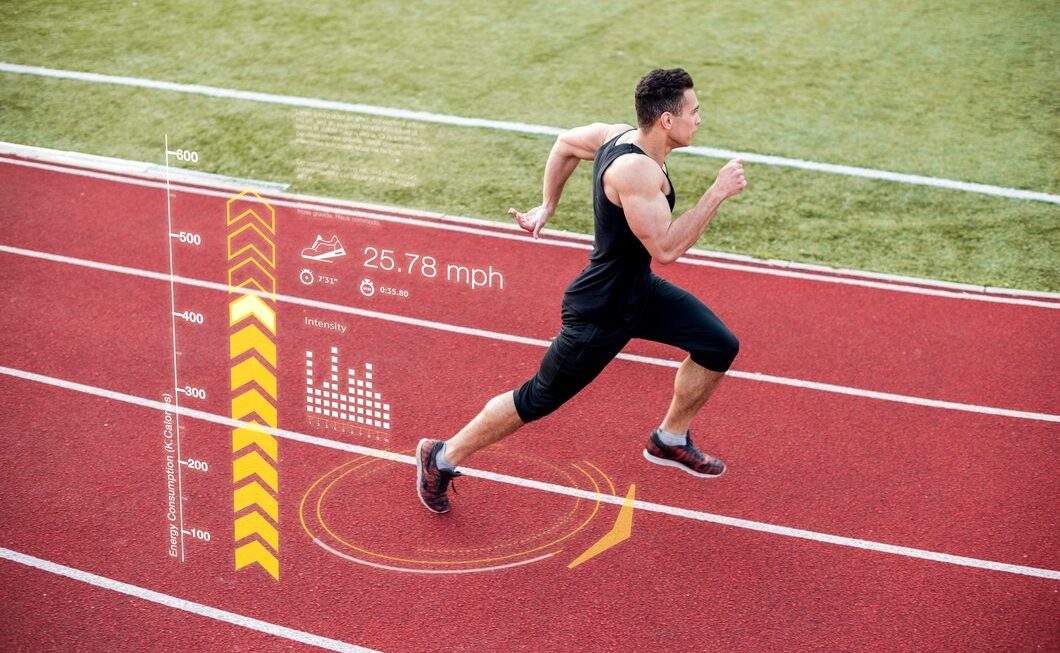Sprinting revolves around achieving explosive bursts of speed over short distances. It is not just about being fast; it is a precise endeavour that demands power, technique, and mental resilience.
In this in-depth exploration, we will delve into the world of sprinting, uncovering its techniques, benefits, training methods, and more.
The essence of sprinting
In this athletic discipline, the primary goal is to cover a specific distance in the quickest possible time. Unlike the focus of long-distance running, which centres on endurance, sprinting prioritizes velocity and rapid acceleration. Sprinters strive to attain their maximum speed as rapidly as possible and maintain it throughout their sprint.
The critical difference lies in the energy systems utilized. Sprinting taps into the body’s anaerobic system, relying on stored energy sources within the muscles. This contrasts aerobic exercise, where the body uses oxygen to produce energy for longer-duration activities.
The science behind speed
Sprinting involves a deep understanding of the biomechanics and physics that propel a sprinter forward. Each step is a carefully orchestrated symphony of muscle contractions, ground reaction forces, and precise limb movements.
The legs generate explosive power, while arm movements assist in maintaining balance and providing extra propulsion. The interaction between the athlete and the ground is crucial in optimizing acceleration and maintaining high velocities.
Sprinting techniques
Successful sprinting results from perfecting various techniques that maximize speed and efficiency. Sprinters use a specific series of movements to generate a lot of power for a brief burst of speed:
- The drive phase. In this initial phase, the focus is on accelerating from the starting position. Sprinters exert tremendous force against the track to propel themselves forward. The arms, in particular, play a pivotal role in generating power during this phase.
- Knee drive. Sprinters emphasize bringing the knees high with each stride, allowing for more powerful leg extension.
- Foot strike. The feet rapidly and forcefully hit the ground, using the ground’s energy to push the sprinter forward.
- The maintenance phase. As sprinters approach their maximum velocity, they transition into the maintenance phase. Here, the goal is to maintain their speed while minimizing deceleration.
Mastering sprinting techniques is paramount for optimizing your speed and efficiency on the track. Refining your posture, form, and arm movements can significantly enhance your sprinting performance.
Benefits of sprinting
Sprinting offers various benefits that extend beyond the realm of sheer speed. It is an excellent cardiovascular workout, improving heart health, increasing lung capacity, and enhancing overall fitness. Sprinting also engages multiple muscle groups, contributing to muscle development and toning.
One notable advantage is its effectiveness in calorie burning. Sprinting burns many calories in a relatively short time. This feature makes it an efficient option for those looking to manage their weight.
Sprint training
Sprint training combines strength workouts, technique drills, and interval exercises. Strength training exercises help sprinters build explosive power, enhancing their ability to generate force during acceleration.
Technique drills are crucial for perfecting sprinting form. These drills isolate specific aspects of sprinting, allowing athletes to fine-tune their movements. Interval training plays a pivotal role in building both speed and endurance.
Sprinting events
Sprinting finds its place in various track and field events. The 100 and 200 meters are classic sprints, requiring explosive speed and precise technique. The 400 meters, often referred to as a middle-distance race, combines elements of sprinting and endurance.
Sprinters also shine in relay events, such as the 4×100 and 4×400 meters, showcasing teamwork and speed.
Conclusion
In running, a good training plan is crucial for your fitness and personal growth journey. This guide will help you create, execute, and adjust a running training plan that suits your specific goals and needs. Success comes from setting clear goals, grasping training principles, and consistently working towards your dreams.
Now that you have explored the sprinting world, it is time to take action. It celebrates human potential and the pursuit of being faster, stronger, and better!



